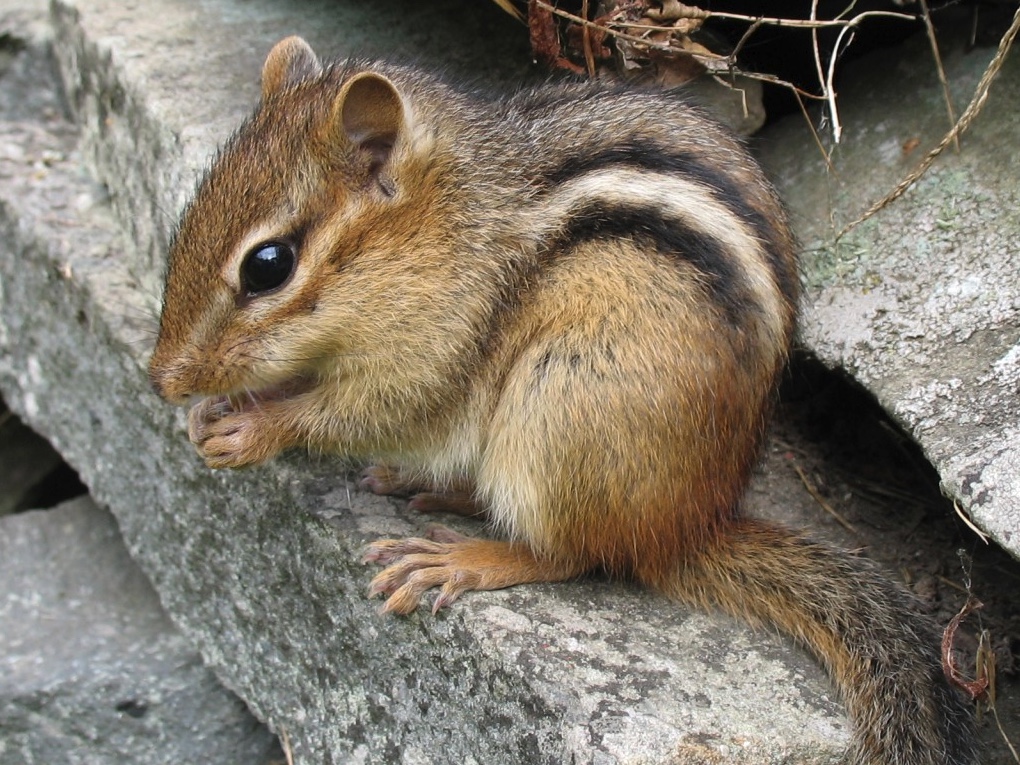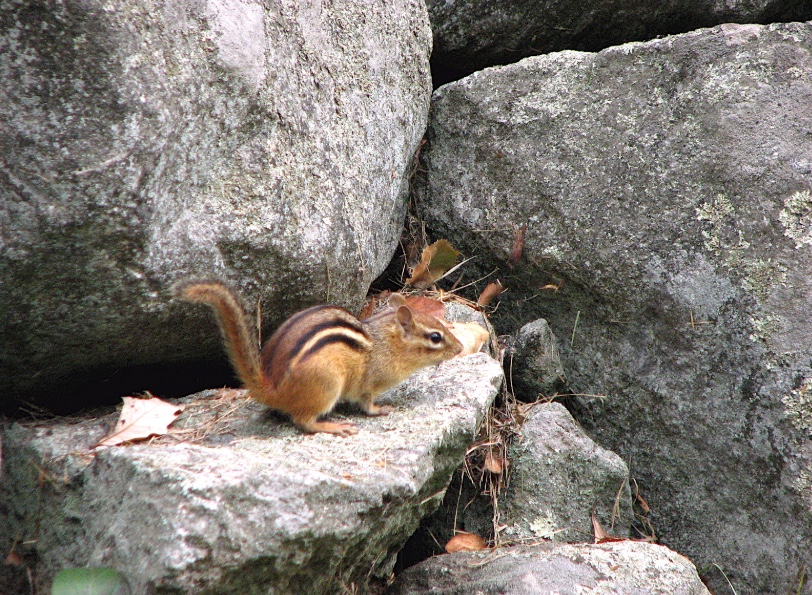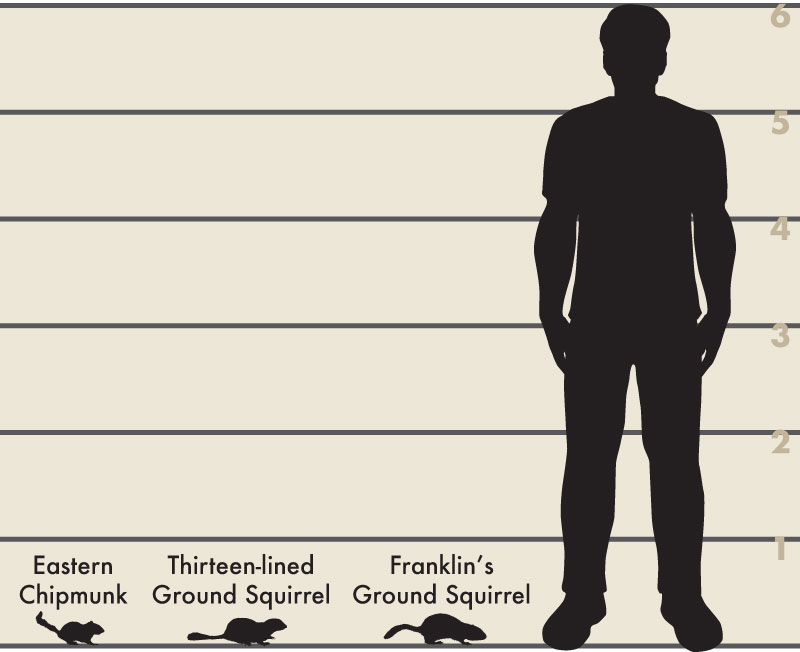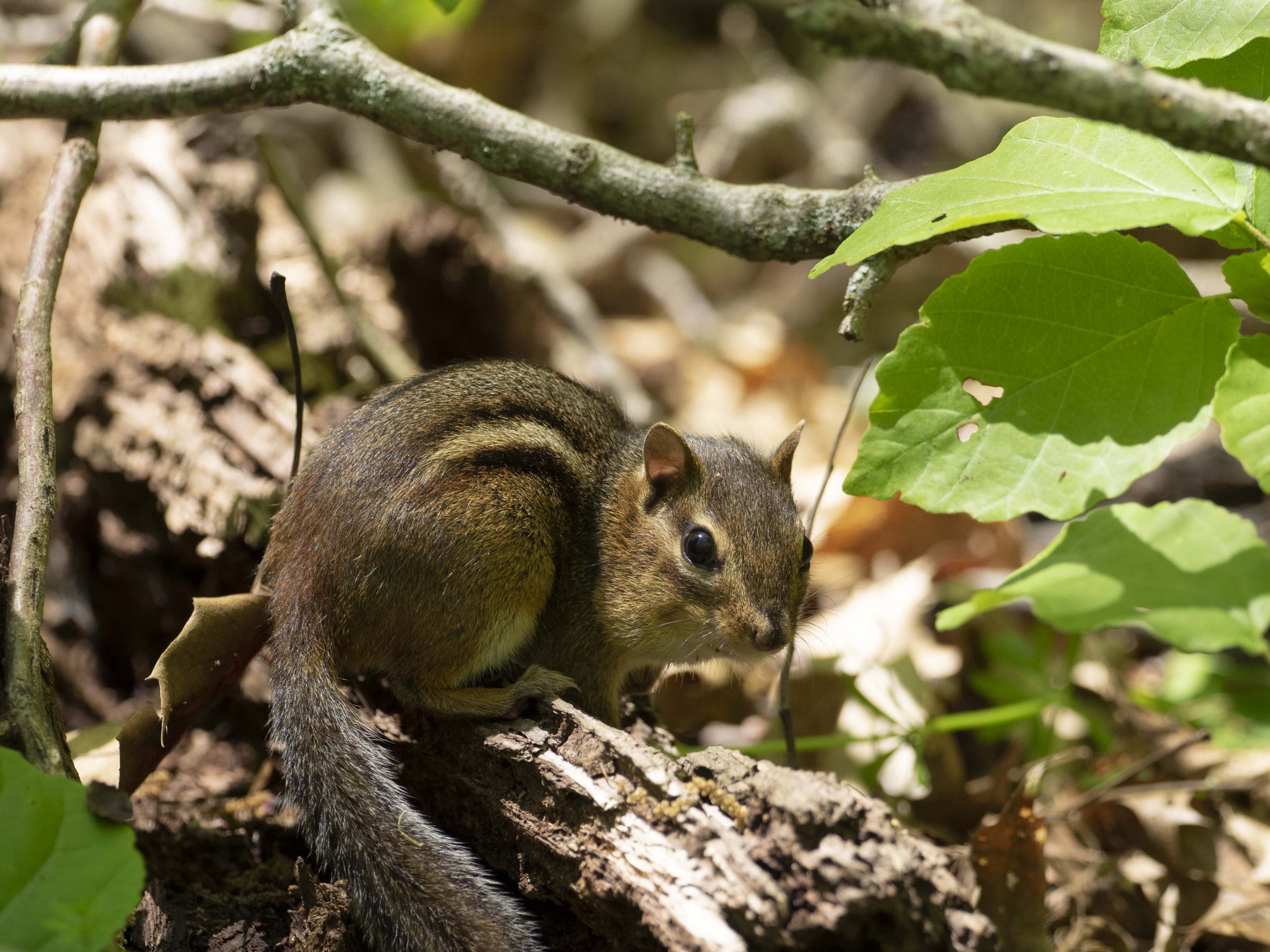
Photo: Gilles Gonthier, CC BY 2.0
Chipmunks help play a role in soil aeration with their burrowing activity. They are also an important part of the food web, since they are prey for hawks, owls, foxes, coyotes, snakes, and many other species.
Chipmunks are one of four ground squirrels found in Illinois. The others are the thirteen-lined ground squirrel, Franklin’s ground squirrel, and the woodchuck.
The eastern chipmunk is the smallest Illinois ground squirrel, weighing 2 to 5 ounces and being 8 to 12 inches in length. Eastern chipmunks have conspicuous light and dark stripes on their back, sides, and cheeks. The fur on their upper parts is reddish-brown, with rust color on their rump and flanks. The belly and sides are buff to white. Their small ears are rounded and erect. The tail is covered with fur, but it is not bushy and is somewhat flattened. Chipmunks have internal cheek pouches that are used to transport food or excavated soil. The chipmunk does not hibernate. Because they have limited digging ability, they often burrow under rocks, logs, or buildings.
Eastern chipmunks occur throughout Illinois where there is suitable habitat, although they appear to be absent in the southeastern counties. They are often abundant where they occur in Illinois.
Chipmunks are diurnal, meaning that they are active during the day.
All ground squirrels are solitary; however, since chipmunks are not very territorial, many may be seen in close proximity, particularly if there is a good supply of food at that location.
Chipmunks play an important role in soil aeration and help condition the soil for plant growth. Their body wastes contribute to the organic structure of the soil.
Chipmunks are an important part of the food web, being preyed upon by several species of bird, mammal, and snake.
Chipmunks do not pose a public health concern.
Eastern chipmunks live in wooded areas. They prefer woodland borders rather than deep forests, particularly sloped areas with plenty of woody underbrush. But they are common in more urban areas as well.
Eastern chipmunks feed primarily on nuts, seeds, fruits, fungi, flowers, and buds. They cache (store) their food in their burrows. During the summer, chipmunks will also eat invertebrates such as beetles, grasshoppers, and spiders.
Like tree squirrels, the eastern chipmunk has two breeding seasons, one in spring and the other in summer. Chipmunk gestation is 31 days, with two to six young per litter. Chipmunks are weaned at six weeks of age.
Exclude ground squirrels from small areas by installing 18-inch high ¼- to ½-inch mesh hardware cloth (hail screen) buried six inches below ground.
Chipmunks should be excluded from buildings wherever possible. Use hardware cloth with ¼-inch mesh, caulking, or other appropriate materials to close openings where they could gain entry. To keep chipmunks from burrowing under foundations, place hardware cloth bent at a 90-degree angle along the foundation and cover with soil.
There are currently no repellents registered for use against chipmunks in Illinois.
If other control methods have failed, chipmunks can be trapped and removed. A permit is not needed. Live traps baited with seed can be used to capture the animals. If you plan to release the chipmunk, it is recommended that you release it five to 10 miles away. You will need written permission of the landowner before you release the chipmunk. Rat-sized snap traps are efficient if chipmunks are to be lethally removed. Nuisance wildlife control operators will trap and remove chipmunks for a fee.
In Illinois, eastern chipmunks are not protected by the Illinois Wildlife Code. They may be removed without a permit.

Photo: Joyce Hofmann

Illustrator: Lynn Smith

Photo: Sheila Newenham
The Wildlife Illinois website was authorized by the Illinois Department of Natural Resources (IDNR) in partial fulfillment of project W-147-T. The website was developed by the National Great Rivers Research and Education Center, 2wav, and the IDNR in partnership with the United States Department of Agriculture Animal and Plant Health Inspection Service Wildlife Services and University of Illinois Extension to provide research-based information about how to coexist with Illinois wildlife.